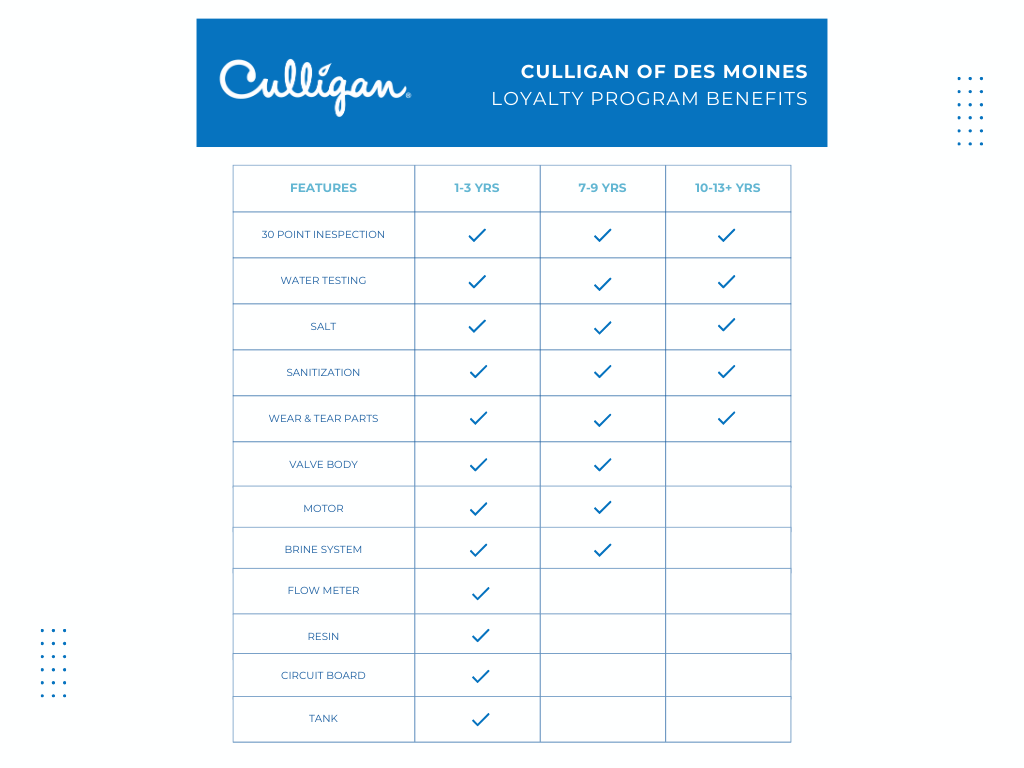One Culligan system can last for decades. That’s why it’s better to receive Better Water for Life benefits early! If you join within the first few years of installation, you get even better deals and service. The longer you wait, the less likely you are to experience these unbeatable perks.
